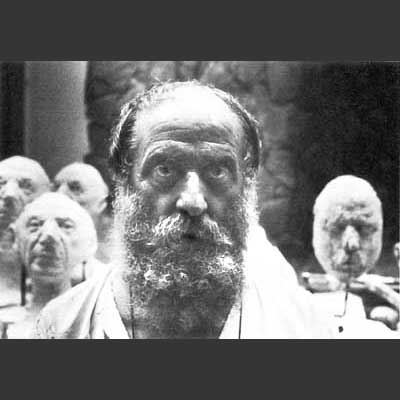

César 1921 – 1998
![]() César Baldaccini is one of the great sculptors of the twentieth century. As a young man he took a stand for art that was firmly anchored in reality, as a counterweight to the lyrical, abstract painting of the time.
César Baldaccini is one of the great sculptors of the twentieth century. As a young man he took a stand for art that was firmly anchored in reality, as a counterweight to the lyrical, abstract painting of the time.
![]() He has transformed rusty bolts, screws, scrap metal and steel wire into biomorphic sculptures depicting everything from chickens on roller skates to self-portraits of the artist. In his magical hands, metal from the junk-heap, old car parts, discarded cans and plexiglass have been compacted into delightful cubistic works of art that César himself has called “compressions”. As a kind of antithesis to these, he experimented
He has transformed rusty bolts, screws, scrap metal and steel wire into biomorphic sculptures depicting everything from chickens on roller skates to self-portraits of the artist. In his magical hands, metal from the junk-heap, old car parts, discarded cans and plexiglass have been compacted into delightful cubistic works of art that César himself has called “compressions”. As a kind of antithesis to these, he experimented
by expanding plastics, glass, aluminium and bronze into voluptuously inflated forms known as “expansions”.
![]() Among César’s casts of sculpted breasts, female torsos and clenched fists, it is the thumb that, above all else, has emerged as the artist’s hallmark – his own, greatly enlarged thumb in bronze. Exhibited for the first time at the Galerie Claude Bernard in Paris in 1965, today you can see it – in bronze or marble – in museums and public places all over the world. His largest bronze thumb, measuring fully 12 metres in
Among César’s casts of sculpted breasts, female torsos and clenched fists, it is the thumb that, above all else, has emerged as the artist’s hallmark – his own, greatly enlarged thumb in bronze. Exhibited for the first time at the Galerie Claude Bernard in Paris in 1965, today you can see it – in bronze or marble – in museums and public places all over the world. His largest bronze thumb, measuring fully 12 metres in
height, stands in La Défense in Paris. In similar fashion, the artist’s signature is always accompanied by his thumb print.
![]() Born in Marseilles in 1921, by the age of 12 César had already left school to work in his father’s wine merchants business. In 1935, however, he enrolled at the École des Beaux Arts in Marseilles. He continued his art studies in 1943 at the École Nationale Supérieure des Beaux Arts in Paris, sharing a house for some time with Alberto Giacometti. In 1960 he was invited to join the group of artists known as “les Nouveaux Réalistes”, where he worked together with Arman, Pierre Restany, Niki de Saint Phalle, Jean Tinguely and others.
Born in Marseilles in 1921, by the age of 12 César had already left school to work in his father’s wine merchants business. In 1935, however, he enrolled at the École des Beaux Arts in Marseilles. He continued his art studies in 1943 at the École Nationale Supérieure des Beaux Arts in Paris, sharing a house for some time with Alberto Giacometti. In 1960 he was invited to join the group of artists known as “les Nouveaux Réalistes”, where he worked together with Arman, Pierre Restany, Niki de Saint Phalle, Jean Tinguely and others.
![]() César’s genius lies in his ability to coax artistic forms from whatever materials may be at hand. “When I was a child,” he recalled, “I used to think that a sculptor was a man who chipped away at stone with a hammer and chisel. It was only later that I understood you can make sculptures from any material you choose.”
César’s genius lies in his ability to coax artistic forms from whatever materials may be at hand. “When I was a child,” he recalled, “I used to think that a sculptor was a man who chipped away at stone with a hammer and chisel. It was only later that I understood you can make sculptures from any material you choose.”
![]() In the early 1940s César discovered the opportunities that scrap metal opened up, and his first solo exhibition, “Animaux en ferraille” (or “Scrap metal animals”), was held at the Galerie Lucien Durand in Paris in 1954.
In the early 1940s César discovered the opportunities that scrap metal opened up, and his first solo exhibition, “Animaux en ferraille” (or “Scrap metal animals”), was held at the Galerie Lucien Durand in Paris in 1954.
“I don’t choose my materials to suit a particular motif,” he once said. “It’s the material itself that shapes the expression I give to my sculptures.”

Stora Nygatan 30, SE-211 37 Malmö
Phone +46(0)40-611 99 11, Fax +46(0)40-611 85 45
office@gkm.se